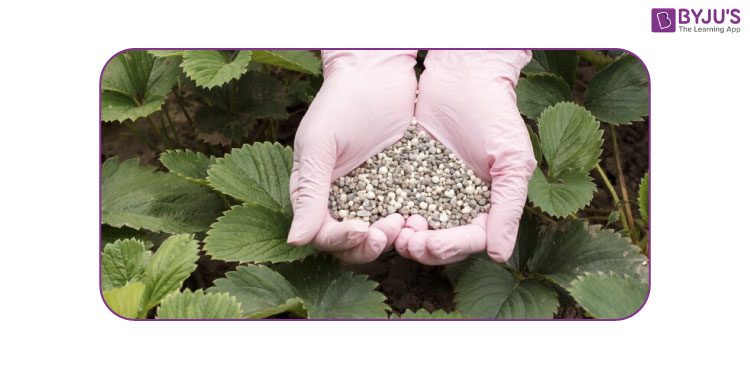Introduction
Every living organism requires nutrients for its growth and other metabolic activities. For its survival, it follows a mode of nutrition. We humans and animals depend on plants for nutrients. Plants have an autotrophic mode of nutrition where they prepare their own food and obtain their nutrients via photosynthesis. When the soil is not fertile enough to provide essential macro and micronutrients to plants in sufficient quantity, they need another source of nutrition. Manures and fertilizers are the alternatives used in agriculture for this purpose.

What is Agriculture?
Agriculture is the art of growing food and cash crops for the basic requirement of every living being. This is practised through a series of phases. In ancient times they used to cultivate in a very small field by using certain procedures for their management and improvement but today the agricultural practices and technologies are growing very rapidly as it includes a set of procedures to be followed to raise crops. The different agricultural practices followed include:
- Preparation of soil,
- Sowing of seeds,
- Removal of weeds and other unwanted plants from the field,
- Manuring, and irrigation of crops,
- Harvesting and storing of yielded crops.
The higher technology in farming, agriculture and agricultural practice requires the knowledge of harvesting and methods of storing and protecting of the harvested crops.
Types of Agriculture
Agriculture is divided into three main types:
- Arable farming is a farming system of growing crops in fields. Paddy, wheat, and barley are the main crops grown by the Arable farming system.
- Pastoral farming is a farming system for producing livestock and raising animals. Cattle, sheep, hens and other animals are examples of Pastoral farming animals.
- Mixed farming is the farming system which is the combination of both arable farming and pastoral farming.
Fertilizers

Manures are the natural source of nutrients obtained from cow dung, leaves, human excreta, and other wastes. Fertilizers are commercial products available in different forms like solid, gas or liquid. Both manure and fertilizers contain salts and organic chemicals which consist of essential plant nutrients such as nitrogen, potassium, and phosphorus in optimum concentrations. They make soil fertile and provide nutrients to plants for better growth and higher yield.
Types of Fertilizers
There are six different types of Fertilizers.
- Potassic Fertilizers.
- Complete Fertilizers.
- Phosphate Fertilizers.
- Compound Fertilizers.
- Nitrogenous Fertilizers.
- Organic Nitrogenous Fertilizers.
Use of Fertilizers or Importance of Fertilizers in Agriculture
Unlike manures, fertilizers are very expensive and are used in large amounts in farming fields. As a part of crop production management, farmers largely depend on fertilizer. But fertilizers should only be used when it’s necessary. Manure should not be replaced by fertilizer as constant use of it may lead to infertility of soil and pollution. During over-irrigation, fertilizers get washed along with excess water and are unavailable for absorption by plants which causes water pollution. Also, the replenishment of organic substances in the soil gets affected and microbes will be harmed due to the clogging of fertilizers in the soil. Sometimes fertilizers cause various plant diseases. Therefore, the amount and frequency of their use need to be checked and controlled. It should always be optimum.
Due to these disadvantages, nowadays organic farming is much preferred over fertilizer. Organic farming is a new method of farming where crops are grown with the help of natural compost.
List of Chemical Fertilizers
Chemical fertilizers are considered inorganic fertilizers containing a high concentration of nutrients required for plant growth. They are composed of primary macronutrients, like nitrogen, phosphorus, and potassium compounds. Based on their composition, chemical fertilizers are further divided into different types.
Listed below are the names of chemical fertilizers based on their compositions:
- Amide fertilizers.
- Nitrate fertilizers.
- Potassic Fertilizers.
- Ammonical fertilizers.
- Ammonical-nitrate fertilizers.
- Insoluble phosphatic fertilizers.
- Water-soluble phosphatic fertilizers.
- Citric acid-soluble phosphatic fertilizers.
- NPK – Nitrogen-Phosphorus-Potassium Fertilizers.








0 Comments